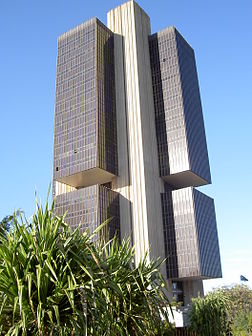Fruitful Relationships: Clearing and Settlement in Brazil
By Flavio Peppe
As Brazil’s economy has grown so has its financial markets. The volume of equities traded on the main market, BM&F BOVESPA, has increased five-fold over the past five years, and the exchange’s derivatives platform was the world’s sixth-largest in terms of contracts traded in 2010. In these circumstances, it is no surprise that traditional and alternative investment managers based in the US, Europe and Asia are joining the tide of banks, trading firms and infrastructure providers flocking to the Brazilian markets.
Nonetheless, potential new entrants to the Brazilian financial markets should be aware that some of its unique features. The country is renowned for its range of regulatory and legal requirements, although some of these protectionist features have helped to insulate Brazil from the worst effects of the global financial crisis. As a result, foreign firms often choose to form partner ships with established local players as the best way to achieve compliance and have a presence in this emerging market.
This is the second paper in our series to focus on the particular opportunities and challenges that face global asset managers entering the Brazilian market. Where the first paper examined the overall investment climate, this paper sets out the key features and structures of Brazil’s unique clearing and settlement framework. It also identifies some other key considerations that foreign investors need to be aware of before investing or setting up operations in the world’s seventh-largest economy.
The rapid growth of Brazil’s economy and financial markets are attracting a wave of foreign entrants
Foreigners visiting Brazil sometimes acquire a taste for soft drinks made from guarana beans, a natural stimulant, which are hugely popular. In the same way, international investors looking to spice up their returns are developing an increasing appetite for exposure to Brazil’s rapidly growing economy. National output expanded by 6.9% in 2010, and the Brazilian Government predicts annual growth to continue at an average rate of 4.9% between 2011 and 2015. Brazil has an expanding middle class, growing consumer demand, booming commodity exports and a vast program of public and private sector investment.
As Brazil’s economy has grown so has its financial markets. The volume of equities traded on the main market, BM&F BOVESPA, has increased five-fold over the past five years, and the exchange’s derivatives platform was the world’s sixth-largest in terms of contracts traded in 2010. [1] In these circumstances, it is no surprise that traditional and alternative investment managers based in the US, Europe and Asia are joining the tide of banks, trading firms and infrastructure providers flocking to the Brazilian markets.
“The volume of equities traded on the main market […] has increased five-fold over the past five years…”
Nonetheless, potential new entrants to the Brazilian financial markets should be aware that some of its features are as unique as those of the famous guarana bean. The country is renowned for its range of regulatory and legal requirements, although some of these protectionist features have helped to insulate Brazil from the worst effects of the global financial crisis. As a result, foreign firms often choose to form partnerships with established local players as the best way to achieve compliance and have a presence in this emerging market.
Foreign investors should be aware of Brazil’s unique national payments structure, developed in response to specific historical factors
In this paper we place particular emphasis on an area that foreign entrants to Brazil’s financial markets are unlikely to be familiar with – the country’s unique clearing and settlement arrangements. Fund transfers, payment mechanisms and post-trade clearing and settlement are not typically a primary consideration when entering a new market. They are often described as “financial plumbing,” but in the words of one former US banking regulator, “they are more like the central nervous system.” [2] The global financial volatility of recent years has only increased awareness of how essential it is for different elements of the financial system to work together; this is an area that firms looking to operate in Brazil cannot afford to ignore.
Many of the unique features of Brazil’s current financial architecture have their origin in the 1990s, when Brazil was going through a period of very high inflation. As a result, regulatory attention was focused on reducing the length of settlement cycles. During the following decade, attention shifted toward reducing settlement risk and potential contagion arising from institutional failure. Settlement risk or “Herstatt risk” – named for a German bank that failed in 1974 – is the risk that a financial institution may fail to complete both legs of a transaction, leaving its counterparty exposed to a sudden loss.
A number of legal and structural reforms were made in response to these concerns, including the Brazilian Central Bank (Banco Central do Brasil or BCB) being given the power to nominate certain clearing and settlement systems as systemically important. Systemically important platforms are required to settle transactions in central bank funds, on a delivery versus payment (DVP) basis. In practice, bond, equity, foreign exchange and derivatives platforms – including the majority of over-the-counter (OTC) trading systems – are all designated as being systemically important.
Structurally, the BCB established a realtime gross settlement system, known as the Reserves Transfer System (Sistema de Transferência de Reservas or STR), to settle transactions using accounts held at the central bank itself. Payment messages are sent to STR via the National Financial System Network (Rede do Sistema Financeiro Nacional or RSFN). In addition, the BCB advised the National Congress on The Payment Systems Law of 2001, which took several further steps to reduce settlement risk. These steps included permitting multilateral netting by clearing houses and safeguarding assets posted as collateral from judicial seizure and the reach of bankruptcy law.
The Brazilian Central Bank sits at the center of a complex but highly efficient network of clearing and settlement systems
As a result of these reforms, Brazil’s national payment system today is characterized by the extensive use of straight-through processing. All large value and other systemically important fund transfers are settled in same-day funds, and typically do so within a few minutes of being initiated. Interbank fund transfers are settled irrevocably on a real-time basis. The architecture utilized to make this to happen is centered on STR. This forms the hub of Brazil’s payment systems and functions in conjunction with a variety of other clearing and settlement platforms, connected via the RSFN.
All systemically important interbank transfers are settled directly through STR. Some other settlements take place via SITRAF [3] – a privately operated fund transfer system that effectively shares a platform with STR. Two other clearinghouses also provide interbank clearing and netting: SILOC, [4] for deferred transfers, and COMPE [5] for checks. In both cases, settlement is made through STR. The efficiency of this structure means that transfers between Brazilian retail and commercial bank accounts are now among the fastest in the world. Most retail banking payments are settled on the same day they are initiated, and electronic transfers from checking accounts are typically completed in less than one minute.
In the financial markets, most transactions settle either on the day a trade is made, or one day later (T+1). Federal government bond transactions are cleared and settled through two systems. The most important is SELIC, [6] which handles OTC transactions on a real-time gross settlement basis and is operated by the BCB itself. Deals transacted on the stock exchange (BM&F BOVESPA) are cleared and netted off by its own Debt Securities Clearinghouse and settled jointly with the STR.
The Debt Securities Clearinghouse is one of four multilateral netting systems owned and operated by BM&F BOVESPA. The others are the FX Clearinghouse, for transactions involving the US dollar and Brazilian real; the Derivatives Clearinghouse, for swaps and futures; and the Equity and Corporate Bond Clearinghouse (former CBLC), which mainly handles equities. Each uses the RSFN to arrange settlement in conjunction with STR. Corporate bonds and derivatives traded off the main exchange are cleared and settled through CETIP, a publicly owned organization focused on OTC activity.
Foreign entrants to Brazil’s financial markets are subject to some specific tax and regulatory requirements
As well as the unique features of Brazil’s clearing and settlement systems, foreign individuals and companies entering Brazilian financial markets should be aware of several other factors that apply only to overseas players. Resolution 2,689 of the National Monetary Council requires all foreign investors to nominate both a legal and a fiscal representative within Brazil. A legal representative is required to respond to any civil claim that may arise against the foreign investor, and a fiscal representative to liaise with the Brazilian Internal Revenue Service. In practice, a single financial institution can often act as a foreign investor’s legal and fiscal representative, and take responsibility for the investor’s regulatory reporting to the BCB or the Brazilian Securities & Exchange Commission (Comissão de Valores Mobiliários or CVM).
Foreign investors are also required to hire a local custodian, and firms wishing to trade on an exchange need to establish a local office or enter into partnership with a local institution. Any organization establishing a mutual fund in Brazil should also be aware of the requirement for daily net asset value reporting to the CVM, for disclosure on their website.
“The real has gained significantly against the US dollar over the past two years…”
Lastly, and most importantly, foreign currency investments in Brazil are liable to a financial transactions tax (Imposto sobre Operações Financeiras or IOF). Unlike a withholding tax applied to outflows, the IOF is levied on capital inflows to the Brazilian financial markets. Apart from revenue generation, the main aim of the IOF is to limit the effect of short-term capital flows on the value of the Brazilian real. The real has gained significantly against the US dollar over the past two years, reflecting a hawkish interest rate policy and the effect of growing commodity prices.
In October 2010, the IOF levy on foreign currency conversions for investment in bonds, derivatives and many other financial instruments was raised to 6%, with a lower rate of 2% applied to equities. This has not prevented international investors from allocating funds to Brazilian assets, but it has certainly encouraged them to look more carefully at their Brazilian strategies and operating structures. It also illustrated how important it is for foreign entrants to plan an optimal route through the complexities of Brazil’s laws, taxes and regulations.
We expect foreign players to play an increasing role in the evolution of Brazil’s financial markets
We have summarized some of the most important features of the Brazilian payments system that foreign investors should be aware of, along with some other key regulatory and tax-related requirements. As already mentioned, these complexities – and their associated costs – are often seen as having partially insulated Brazil’s financial markets from global trends. This has helped to limit the impact of the global financial crisis on the Brazilian economy, but it has also tended to hold back the pace of market development.
Nonetheless, Brazilian financial markets are evolving. Asset classes such as real estate funds, private equity funds, alternative investments and ETFs are gaining increasing traction, even if they are at an earlier stage of development than in many other emerging markets. Similarly, the vertical integration that is still a notable feature of Brazil’s financial markets is the subject of growing discussion. At a time when regulators in the US, Europe and elsewhere are looking to break up vertical silos, BM&F BOVESPA is rare in providing the trading platform, posttrade processing, clearinghouse and depositary services for a large proportion of national securities transactions.
In response, Brazilian asset manager Claritas has recently signed an agreement with BATS Global Markets, an alternative trading venue, to explore the creation of a new Brazilian trading platform with its own clearing and depositary services. At the same time, BM&F BOVESPA, unusually for a leading national stock exchange, is taking steps to attract more high frequency traders – a group widely seen as crucial to the success of alternative trading platforms. It is currently developing a new multi-asset platform in conjunction with the CME of the US. [7] In a separate development, US futures exchange ICE has acquired a 12% stake in CETIP. [8]
It therefore seems certain that the structure and features of the Brazilian investment market will continue to evolve, albeit under the watchful eye of the BCB, CVM and the National Monetary Council. Like the guarana tree, which protects its caffeine-packed fruit with bitter leaves, foreign investors may find some features of Brazil’s settlement systems a challenge. However, in our view this is likely to be outweighed by their appreciation of the resulting benefits. Over time, foreign entrants also have the potential to play a growing role in the evolution of Brazil’s financial markets.
About the Author
 Flavio Peppe
Flavio Peppe
Partner, Brazil
Ernst & Young Terco
Auditores Independente S.S.
Tel: +55 11 2573 3290
Email: [email protected]
Ernst & Young is a global leader in audit, tax, transactions and advisory with 152,000 employees worldwide.
Glossary
BCB — Banco Central do Brasil (Brazilian Central Bank)
CETIP — Central de Custódia e de Liquidação Financeira de Títulos (Organized OTC Market for Securities and Derivatives)
COMPE — Centralizadora da Comensação de Cheques e Outros Papéis (Central clearinghouse for checks)
CVM — Comissão de Valores Mobiliários (Brazilian Securities & Exchange Commission)
DVP — Delivery versus payment
IOF — Imposto sobre Operações Financeiras (Financial transactions tax)
OTC — Over the counter
STR — Sistema de Transferência de Reservas (Reserves Transfer System)
RSFN — Rede do Sistema Financeiro Nacional (National Financial System Network)
SELIC — Sistema Especial de Liquidação e de Custódia (Special System for Settlement and Custody)
SILOC — Sistema de Liquidação Diferida das Transferências Interbancárias de Ordens de Crédito (Deferred Settlement System for Interbank Credit Orders)
SITRAF — Sistema de Transferência de Fundos
[1] ”Trading firms flock to Brazil,” Financial News, 28 March 2011.
[2] ”Issues Related to Central Counterparty Clearing,” Speaking at the European Central Bank (ECB) and the Federal Reserve Bank of Chicago (FRBC) conference 04 April 2006.
[3] Sistema de Transferência de Fundos (Funds Transfer System).
[4] Sistema de Liquidação Diferida das Transferências Interbancárias de Ordens de Crédito (Deferred Settlement System for Interbank Credit Orders).
[5] Centralizadora da Compensação de Cheques e Outros Papéis (Central clearinghouse for checks).
[6] Sistema Especial de Liquidação e de Custódia (Special System for Settlement and Custody).
[7] ”BATS and Claritas consider Brazilian Exchange,” Financial Times, 12 February 2011.
[8] “ICE buys into Brazilian clearing firm,” Financial Times, 15 July 2011.
You may have an interest in also reading…
The Promise and Pressure of the UK’s AI Aspirations
With world-class universities, a vibrant startup ecosystem and renewed strategic investment, the United Kingdom has the intellectual capital and policy
UN Labour Report Shows Solid Return for National Investments in Quality Jobs
Developing countries that invested in quality jobs from the early 2000s grew nearly one percentage point faster every year since
Quantitative Easing: Another Shot for the Caffeine Junkie
Early in March, the European Central Bank (ECB) announced its intention to flood the market with about €1.1 trillion in























































































